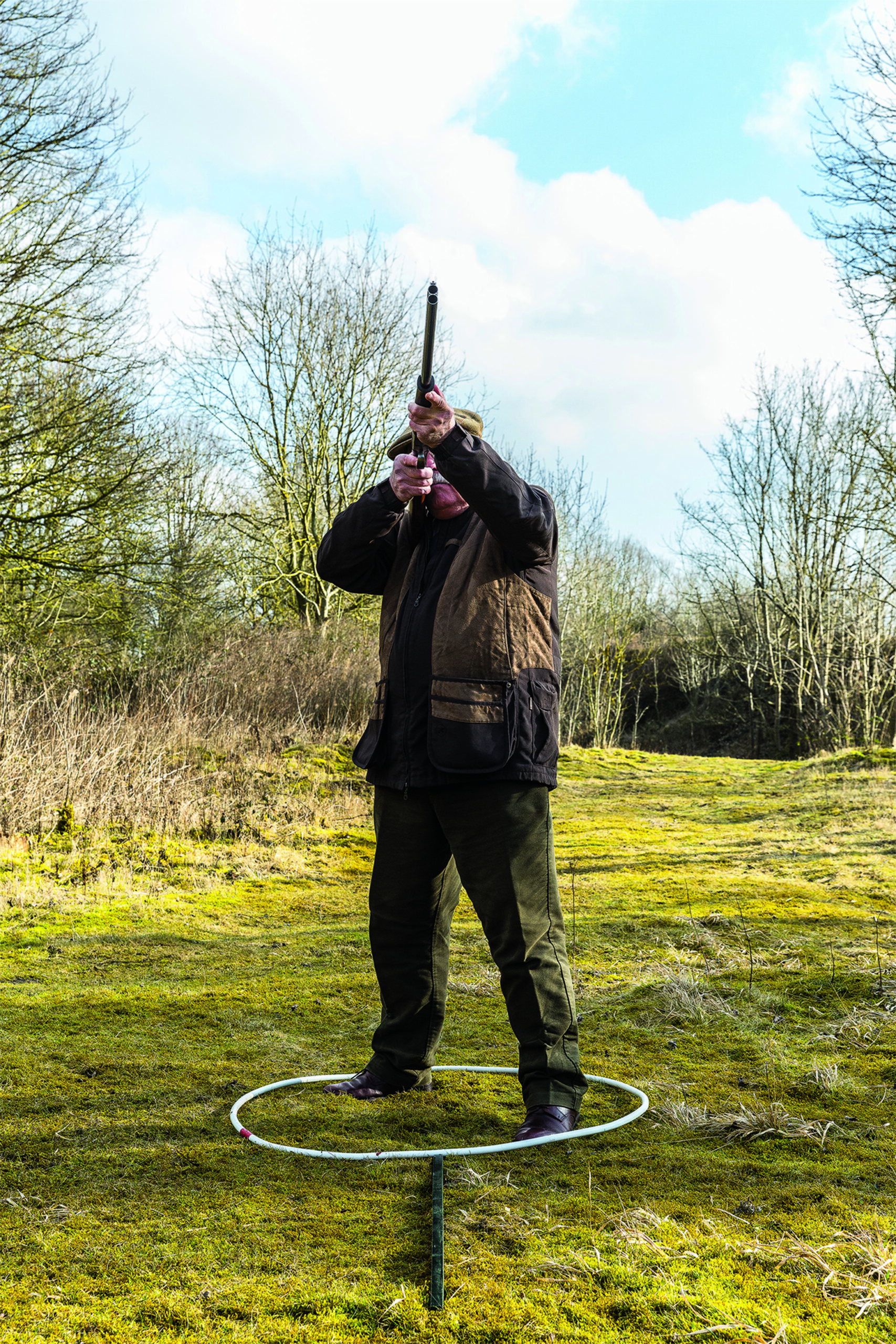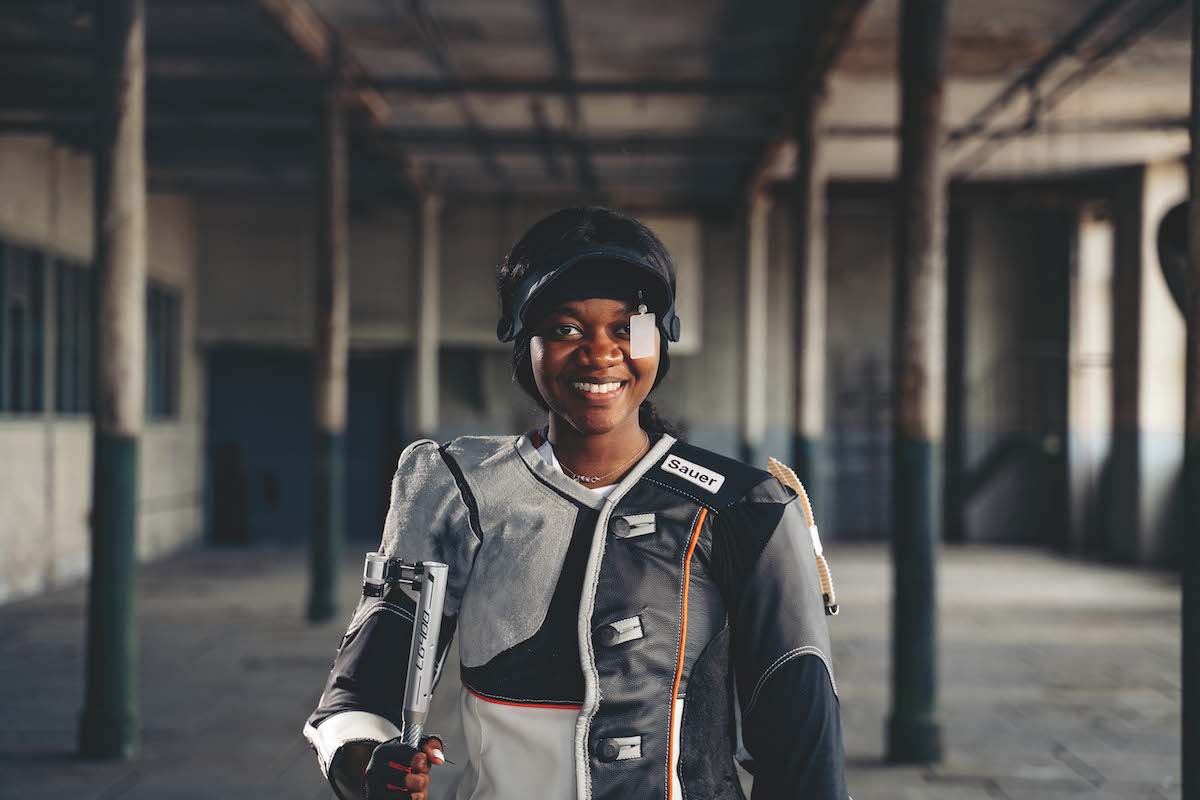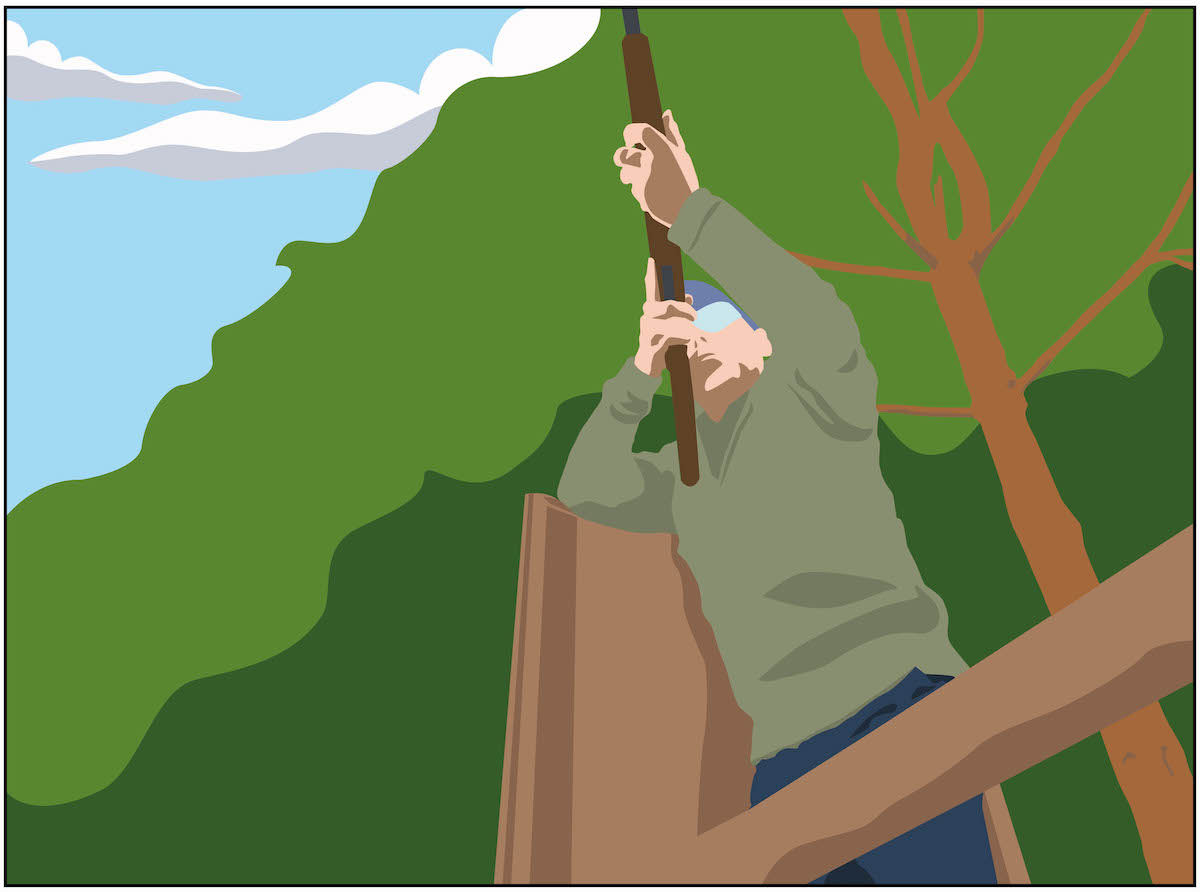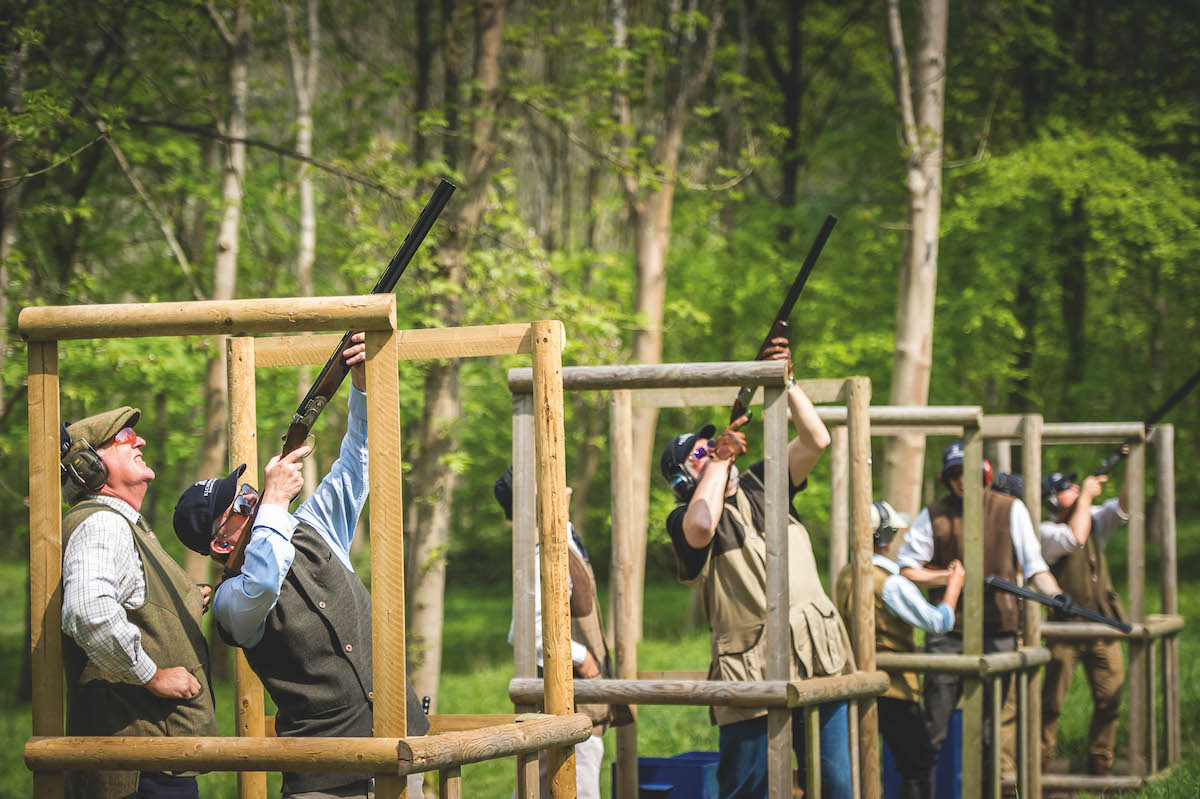What to expect from a good shotgun coach
It's a question Malcolm Plant, chairman of the Institute of Clay Pigeon Shooting Instructors, is asked frequently

The feet should be at a 45 degree angle, but here they are too wide apart
“If I book a lesson or two with a coach, what am I going to learn and how do I know the information and instruction is of high quality?”. It’s an enquiry I’ve come to expect.
Here’s what a good shotgun coach should cover
Safety
- The safe handling of the shotgun is obviously critical and should become second nature. Bystanders can get twitchy when an open and unloaded shotgun has its muzzles floating around, so muzzle awareness please.
- On many double barrelled shotguns the safety catch is not a safety catch; all it does is stop the operator from pulling the trigger. What the safety catch does not do is prevent the internal hammers from hitting the back of the firing pins, when released if the gun is suddenly jarred, as it might be if dropped.
- Keep your finger off the trigger until you are ready to shoot the target; this is particularly important when closing a loaded gun. Close the shotgun by trapping the stock against your hip and pushing the fore-end away from you; if the gun goes off the muzzles should be pointing at the ground a few yards in front of you. It helps this ease of movement if the stock is slightly canted over and trapped against the top of your pelvis.
- This is a more robust and controllable process than the “old-fashioned” recommendation. With a new gun and a rather stiff action, the old-fashioned method can easily result in the muzzles of the gun pointing dangerously close to the operator’s toes, as the novice struggles with this gun closing manoeuvre. All CPSA-qualified coaches recommend this ‘hip and push’ method.

The stock should be placed on your cheek so that your line of sight down the gun just grazes the rib
Stance, gun-mount and handedness
- Place your feet forty-five degrees to where you wish to shoot the target. Not where it’s coming from or going to. Or if you want to use the clock face method; the target will be at 12 o’clock and for the right-hander, your left foot is at about 1 o’clock and your right foot is at about 3 o’clock.
- This foot position gives your upper body the most relaxed control and movement in the part of sky where you wish to shoot the target. Your feet should be shoulder-width apart, no wider or your hips start to lose mobility and you won’t be able to swing your upper body in a smooth, controlled way.
- Gun-mount is next. If you are right-handed, the stock of the gun should be placed on your right cheek so that your line of sight, down the gun, just grazes the rib of the gun. In other words, the gun is pointing where you’re looking! You can see all of the front bead sight, but this is the last time you look at the bead and rib.
- When shooting, all focus is on the target and your subconscious gives you the placement of the gun, from your peripheral vision. Only look at the gun when practising gun-mount or checking gun-fit. If you have mounted to your cheek as described and the coach has chosen a suitable gun for you to use, it will be in the right place in your shoulder. The top of the stock should be more or less in line with the top line of your shoulder and if you stand reasonably upright, your eyes will be close to horizontal.
Eye dominance
Most clients new to shotgun shooting find the investigation of eye dominance very interesting. There are several ways of examining this human characteristic and it becomes more fascinating to the audience when it is explained that there are differences between males and females!
When we point at a distant object, like a clay pigeon in the air or a tree on the horizon, we are lining up our master or dominant eye, the end of our finger and the distant object. Most men who are, for example, right-handed are also right eye dominant; or left-handed, left eye dominant. The percentage of females with coinciding hand and eye dominance is much lower.
It is critical that the coach identifies the visual characteristics of the shooter. If you are right-handed it is critical that your right eye controls the gun.

The hole in the card test is a good way to determine your eye dominance
The hole in the card test for eye dominance
- With both eyes wide open, bring the card up at arm’s length, so you are looking through the hole at a distant object. If you bring the card back to your face, the hole will come back to your dominant eye.
- Again with both of your eyes wide open, point at my finger end, on my face, under my dominant eye. The coach notes which of your eyes directs your finger.
A good coach will then do this, as a final assessment, before watching you actually shoot
How to start clay pigeon shooting
When clay pigeon shooting as a beginner, being prepared is essential for getting good scores.
How to shoot clay pigeons: Key clay pigeon shooting tips
Understand the jargon heard on the clay shooting ground with Mark Russell’s tips for shooting beginners
How to start clay pigeon shooting
When clay pigeon shooting as a beginner, being prepared is essential for getting good scores.
How to shoot clay pigeons: Key clay pigeon shooting tips
Understand the jargon heard on the clay shooting ground with Mark Russell’s tips for shooting beginners
The shooting process
- If you are right-handed, the novice will shoot a right to left crosser; if left-handed your target will be a left to right crosser. These are rather simpler targets for the novice, but you will learn a reproducible process that can be applied to all targets.
- There are three important places on the target’s flightline; where can you first see it, where can you point the gun at the target and where will you shoot it. As we have seen when discussing stance, “where shall I shoot it” dictates your foot position. Your coach will take you through this learning process, stressing that as the target is a crosser, you have got to shoot in front of it.
- Using snap caps in your gun (artificial cartridges), you can have one or two “dry runs” to get used to the gun movement and trigger mechanism. Your coach will know when you have achieved the successful process and move you on to live firing.
- You ought to hit a clay in the first few shots, often the first. When I’m coaching and I’ve seen that the client has reasonable hand and eye co-ordination, a miss probably means I’m not communicating successfully. So I change my verbal instructions or demonstrate in another way.
- It is now perfectly reasonable to challenge the client with a different target; this so-called “progression” in the lesson might be a more distant target or one at a different angle or height. Or possibly a following pair of targets on report, one after the other.
- You can visit the Institute of Clay Shooting Instructors at the Northern Shooting Show in May
Diagnosis
Your teacher must be able to diagnose your faults when you miss. No diagnosis, no coaching capability. And, for example, an observation of say “you missed over the top” is not a diagnosis. The key diagnosis is “why”; it may be a gun mis-mount; or you lifted your head from the stock; or you mis-read the flightline of the clay; or your feet have moved from the correct position, and so on. A good, qualified coach will sort all of these questions out for you.










